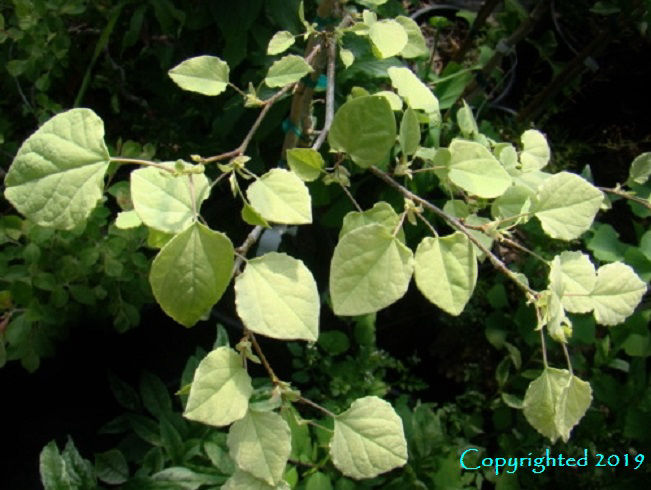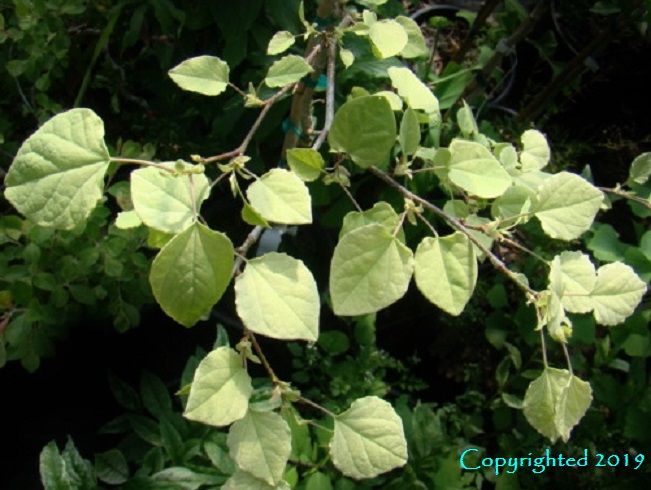Disanthus cercidifolius ‘Edna Mae’
Edna Mae Redbud Hazel
This deciduous native to Japan and China has become increasingly popular in the trade and is mostly seen as a large to medium sized slender-branched shrub or multi trunked tree. The outline is upright initially but will become broader with age, it is ideal for woodland settings where shaded conditions are prevalent.Adequate moisture should be maintained through the warmer months to establish a thriving plant.
Foliage:
This choice new beauty was found in 2014 and recently named “Edna Mae” for my dear departed mother, this offering is exclusive and initially available only from us in the spring of 2020. Disanthus is known in part for the distinct heart shaped leaves that are very similar to the genus Cercis. While the shape of “Edna Mae” is the same, rather than the dark green color of the species this one presents a totally different pastel color scheme, emerging a light yellow and maturing to a sage-mint color. The most valued feature of this genus is the fall color, which is famed for displaying all the color ranges simultaneously. This selection will not disappoint but the darker reds and purples of the genus are less prominent and give way to mostly variations of cream, yellow, orange and red. At minimum I would recommend siting your plant in such a way that protection from afternoon sun is provided.
Bark:
No significant ornamental characteristics noted.
Flower:
A member of the Hamamelidaceae family with some kinship with Witch Hazel in that the display is late in the season, usually appearing right at or just after leaf drop. The blooms are almost always revealed in pairs as is reflected in the Greek translation of the name. The small flowers are purple to red purple, pointedly star shaped and lightly fragrant. Close observations will reveal a pleasing aspect, but the individual size makes the overall display a subtle one.
Fruit:
Small brown capsules appear and endure on the bare branches for some time after flowering.
Size:
Height 6’-10’
Width 8’-10’
The size estimates below are based upon research of the species, my guess is that this form will be comparable but more likely it will be slightly smaller. It should be mentioned here that many descriptions of Disanthus indicate the sizes listed but I have seen very old plants pushing 25’ and read descriptions of native stands that greatly exceed these dimensions, at least in height.
Zone:
5 to 8
This genus was until recently thought to be monotypic – the taxonomically minded among us will be interested to know there is now a second species from Vietnam that has been designated Disanthus ovatifolius – previously and erroneously listed as Uocodendron whartonii.

